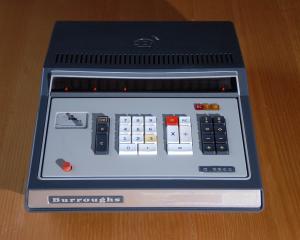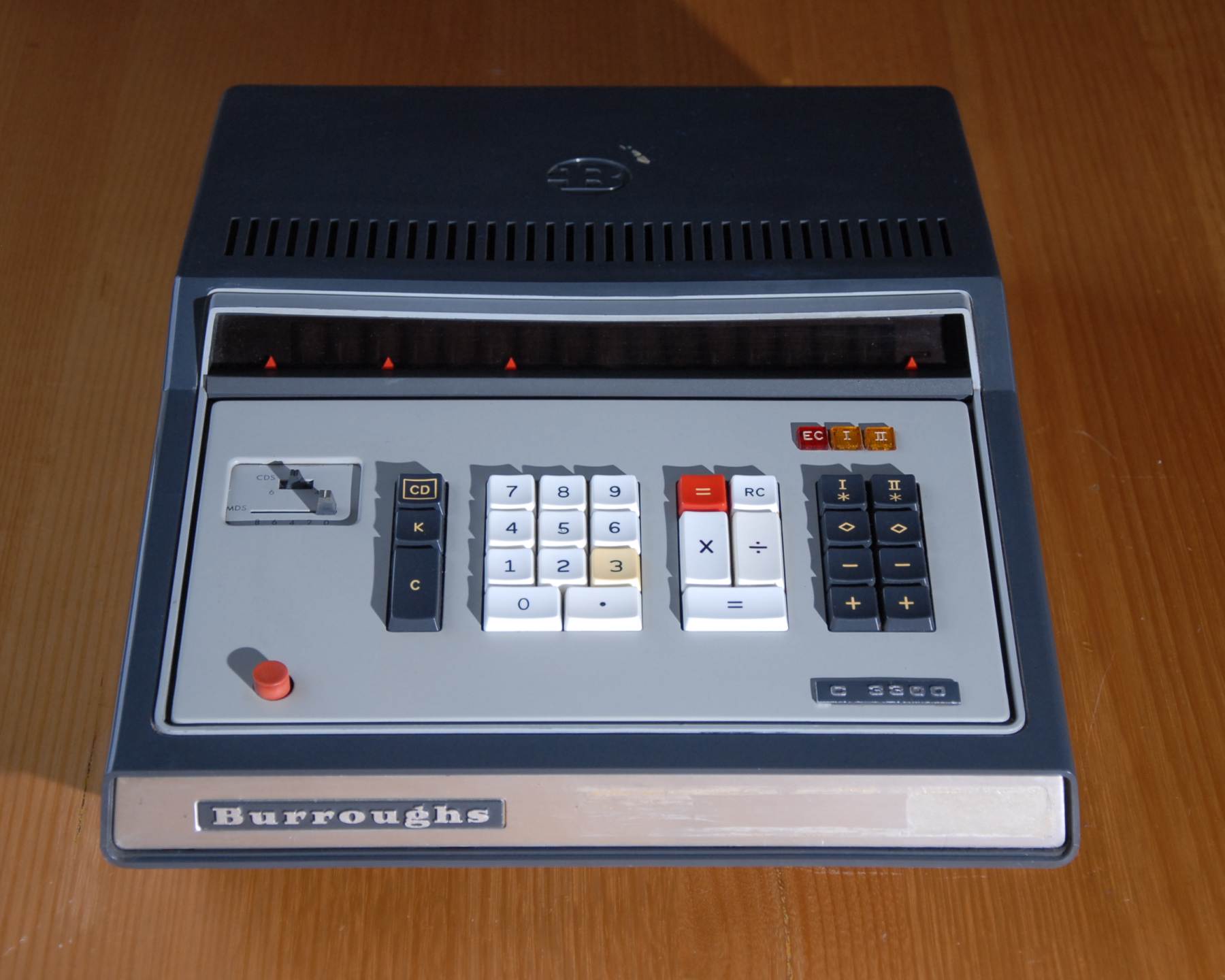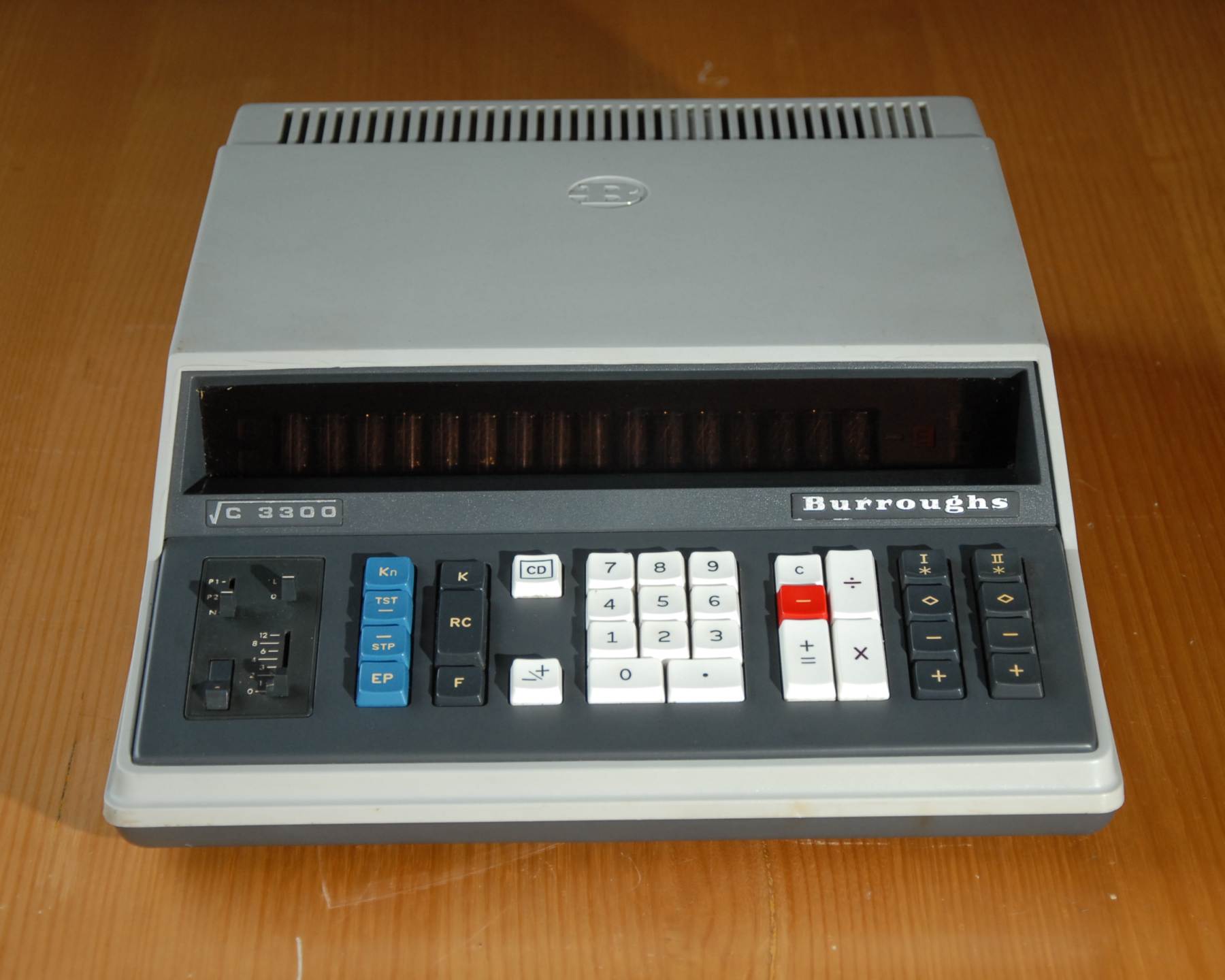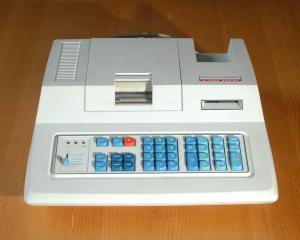Burroughs Calculators - Overview
It is amazing to discover that Burroughs did not market an electronic calculator until the late 1960s and that when it did so, the calculator was designed built by the Japanese firm Hayakawa Electric, better known for its Sharp brand name.
Burroughs was once America’s dominant designer and manufacturer of mechanical office calculators and accounting machines. William Seward Burroughs founded the company in the 1880s, success and growth followed and by the mid 1940s Burroughs was the definitive US office machine company with sales over $100M. Burroughs made a somewhat faltering transition into the electronic age, developing experimental and military computers in-house but failing to develop a viable commercial computer. In the mid-1950s Burroughs purchased the ElectroData Corporation of California and its Electrodata 205 computer. Burroughs was successful in developing this technology and within ten years was designing and producing important large computers such as the B5000 series, as well as major military and aerospace computers.
Burroughs understood the office calculator market very well and certainly had the expertise to build very large and complex computers, so why did Burroughs not explore the electronic calculator market until the late 1960s? There may be a clue in the a 1959 Speech by Mary Hawes, Senior Product Planner with Burroughs/ElectroData. She makes much of Burroughs’ future in electronics, but describes this entirely in terms of large-scale computing and data processing and makes no mention of desktop calculation. Burroughs’ desktop calculator division may have been similarly focussed on its own worldview and this may have led to a situation where the opportunity for electronic desktop calculators fell into the gap between the computer and the office calculator divisions, and so was passed over by both. This is in sharp contrast to Friden, another major US maker of mechanical calculators, who recognised the threat that electronics posed to their mechanical calculators and actively sponsored Robert Ragen’s development of the revolutionary Friden EC-130.
By the time that Burroughs recognised the threat to their mechanical calculators it may have been too late to develop an in-house response, forcing them to look outside, to Japan, where electronic design and production was ramping up in the late 1960s. Burroughs were open about their plan, announcing it in a 1968 press release. Burroughs’ first electronic calculators, the C3000 series, were by Hayakawa/Sharp.
Burroughs went on to develop their own calculators in-house. The Burroughs 5000 series appears to be of this type and the C7203 described here is almost certainly a US design, with US LSI technology. Nevertheless, an overseas connection is maintained because the C7203 was built in a Burroughs factory in France.
Burroughs’ electronic calculator business appears to have lasted less than ten years, from the 3000 series in 1968 to the 7000 series of the mid 1970s. Burrough left the low-end calculator market in the early 1970s as these became cheap commodities but continued to market high-end programmable machines until they were finally replaced in the late 1970s by advanced pocket calculators and emerging personal computers. This brief history may also explain why there is limited information about electronic desktop calculators available among the otherwise extensive Burroughs online history.
Burroughs C3300 by Hayakawa / Sharp
This is among the earliest Burroughs-badged machines known. It is a second generation design, using Japanese SSI ICs and Japanese Nixies for display. It is a 15-digit, 2-memory machine with a “plus-equals” and “minus-equals” keyboard.
It is physically very similar to the Sharp CS-32 and it seem likely that the Burroughs 3300 was a Sharp OEM version of the CS-32.
It has an interface plug under a screw-secured plate on the base, this feature was found on most (?all) of the Sharp-produced machines.
Burroughs C3317 by Hayakawa / Sharp
This is major development of the 3300, still using second generation Japanese SSI ICs and a Japanese Nixie display.
It is programmable with two program memories and has conditional branch and loop abilities. The keyboard is more modern but still retains a “plus-equals” key.
It has an interface plug under a screw-secured plate on the rear, the accessible position perhaps suggesting that this may have been available for peripheral interfacing.
Burroughs’ own C7203
This machine is from the last generation of Burroughs desktop calculators. It is not a dawn-age machine at all but it has a place in the DoPECC collection as an illustration of the final stage of calculator development, before sophisticated programmable calculators were finally displaced by desktop computers.
The C7203 is print-only with no numeric display, this was a commonly design outcome when large displays were still expensive and users in any case wanted a permanent record of all inputs and results. It has extensive programming features and has a magnetic card reader/writer for program and data storage.
It is marked “Made in France” but the ICs are American, by AMI and Motorola. It is assumed to be a Burroughs in-house design but the actual designer(s) are unknown.





